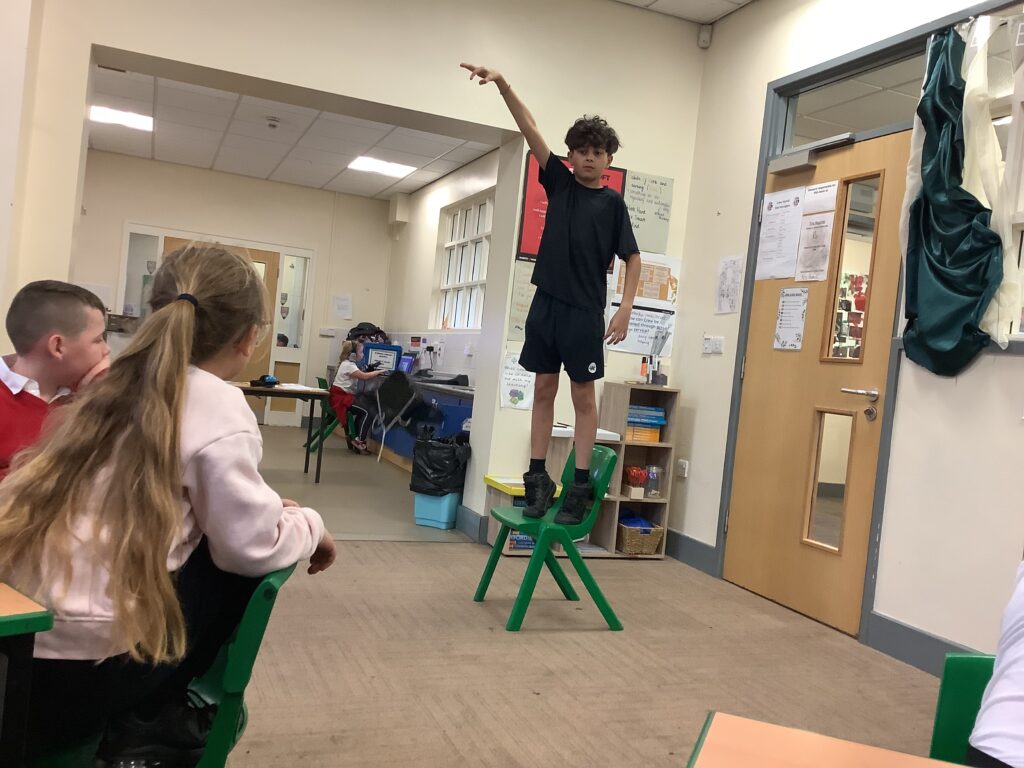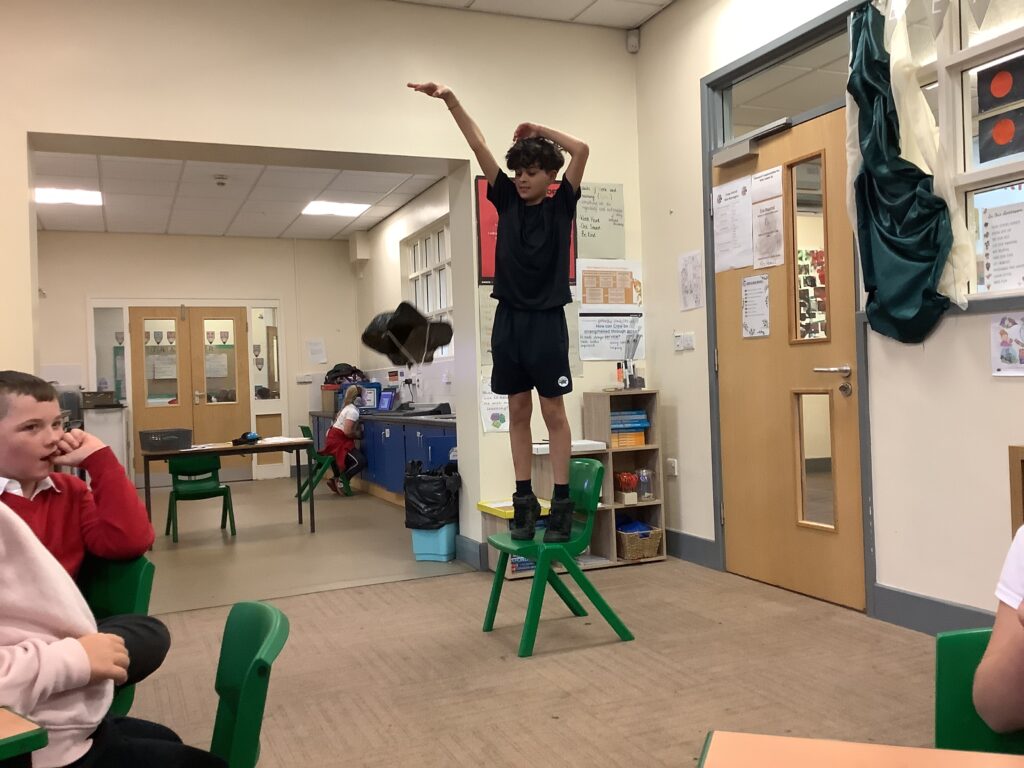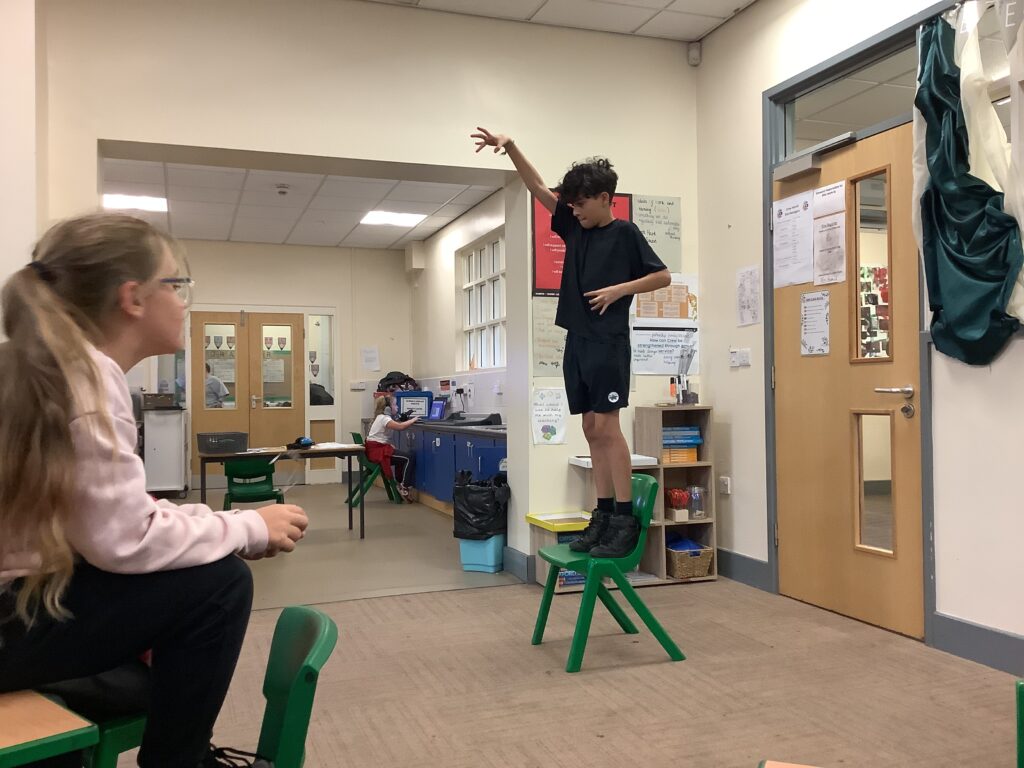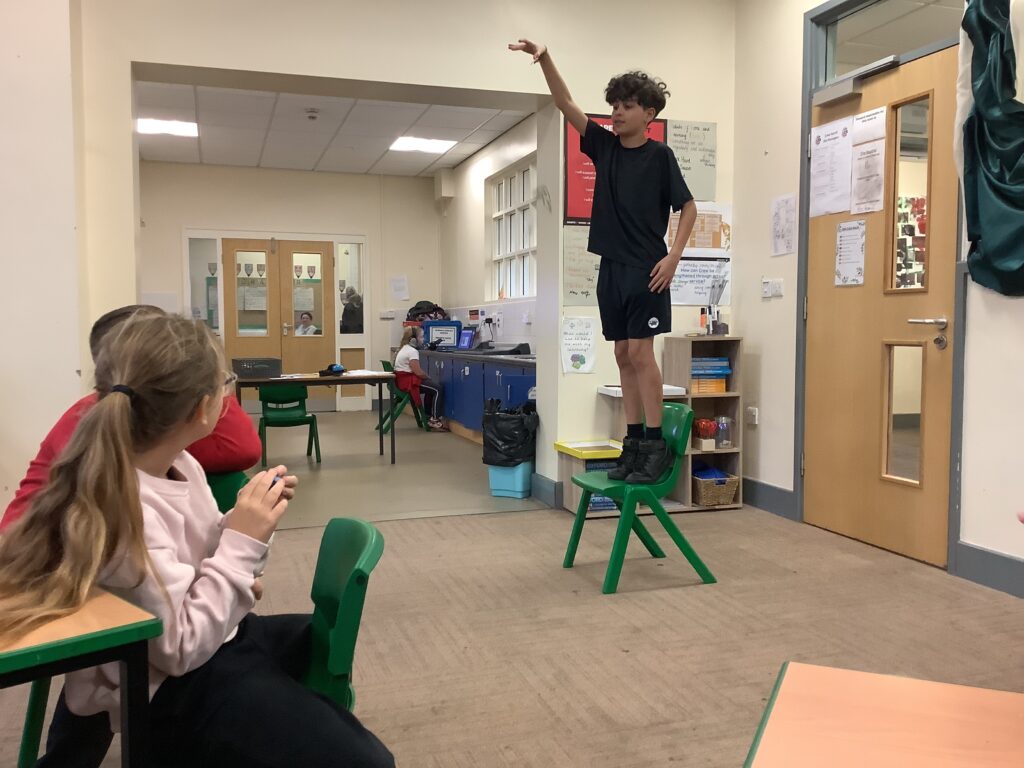This week, Crew Hamill have continued their expedition lessons by focusing on another force – air resistance. We looked at what air resistance is – a type of friction between air and another material – and looked at the impact this had on objects when they fell to the ground. We tested it out by dropping two pieces of paper (one flat and one screwed into a ball) and discussed which one would fall to the ground first. We then discussed why this might have happened. Together, we predicted the ball of paper would fall fastest as it was more dense and had a smaller surface area. We were then introduced to our mission from the National Space Station:
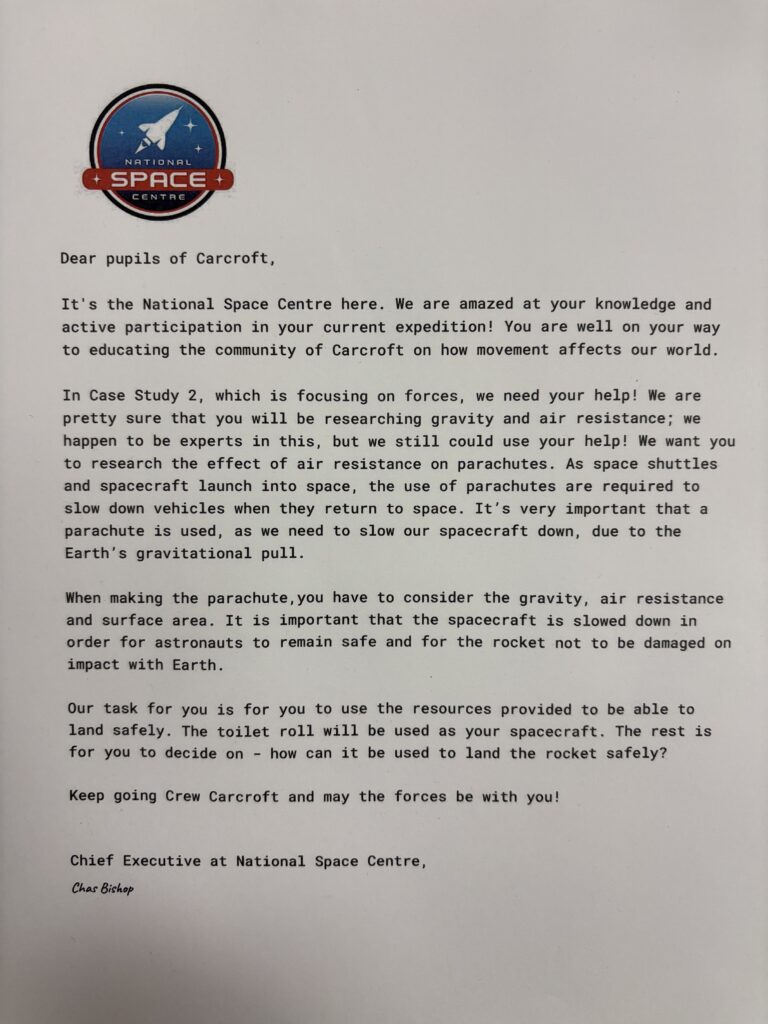
Using our design brief, we worked in pairs to design and create a parachute that could be tested for air resistance. We worked in mini crews to create these and then came together as a whole crew to test them out. We began by ordering the parachutes from biggest to smallest in order to test whether our prediction (that larger parachutes will take longer to fall to the floor as there will be more air resistance) was correct. We found that we were correct – the larger the canopy on the parachute, the longer it took to fall to the ground. However, there was one anomaly with a parachute that had been made with a thicker canopy and this effected the results slightly.
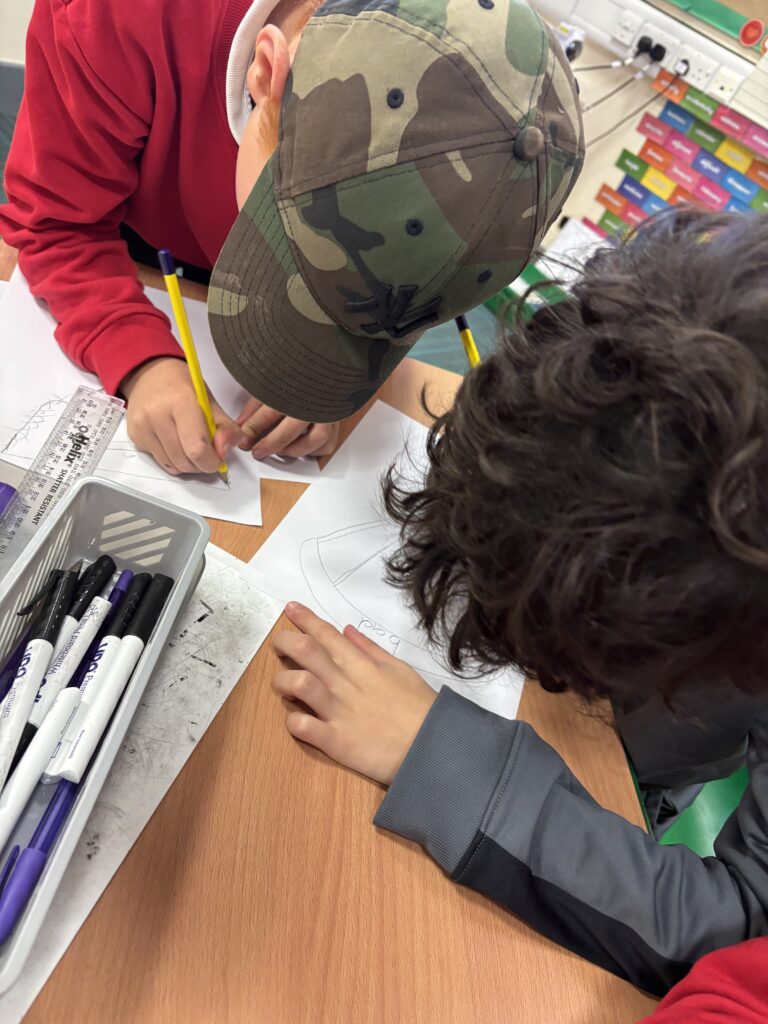
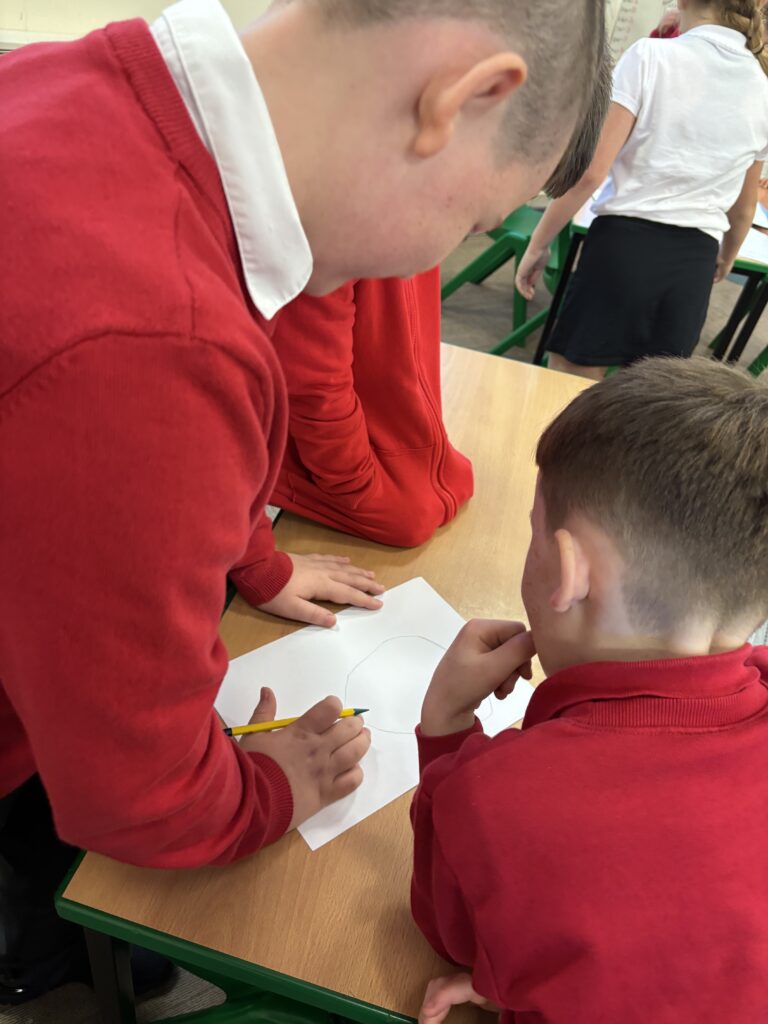
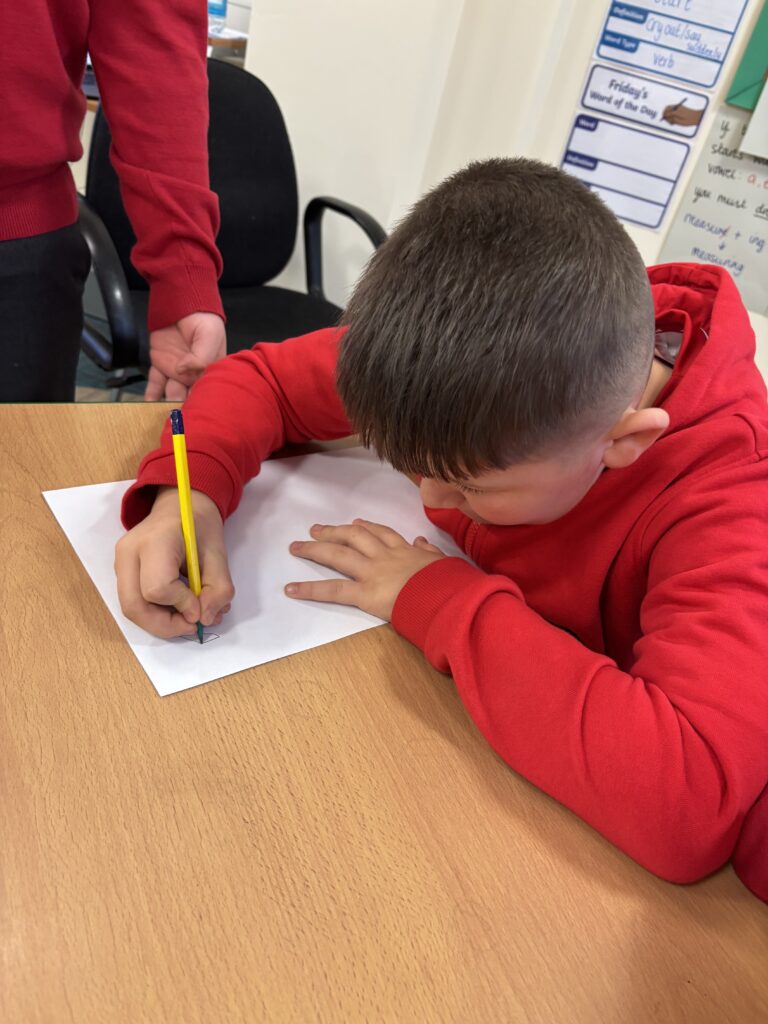
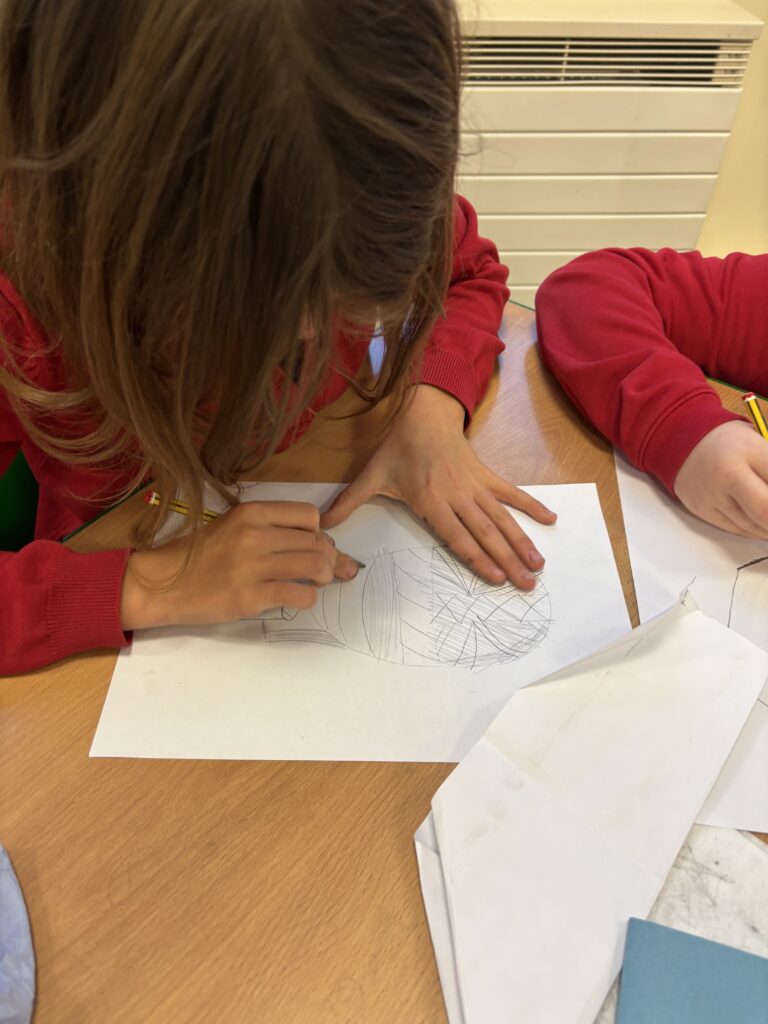
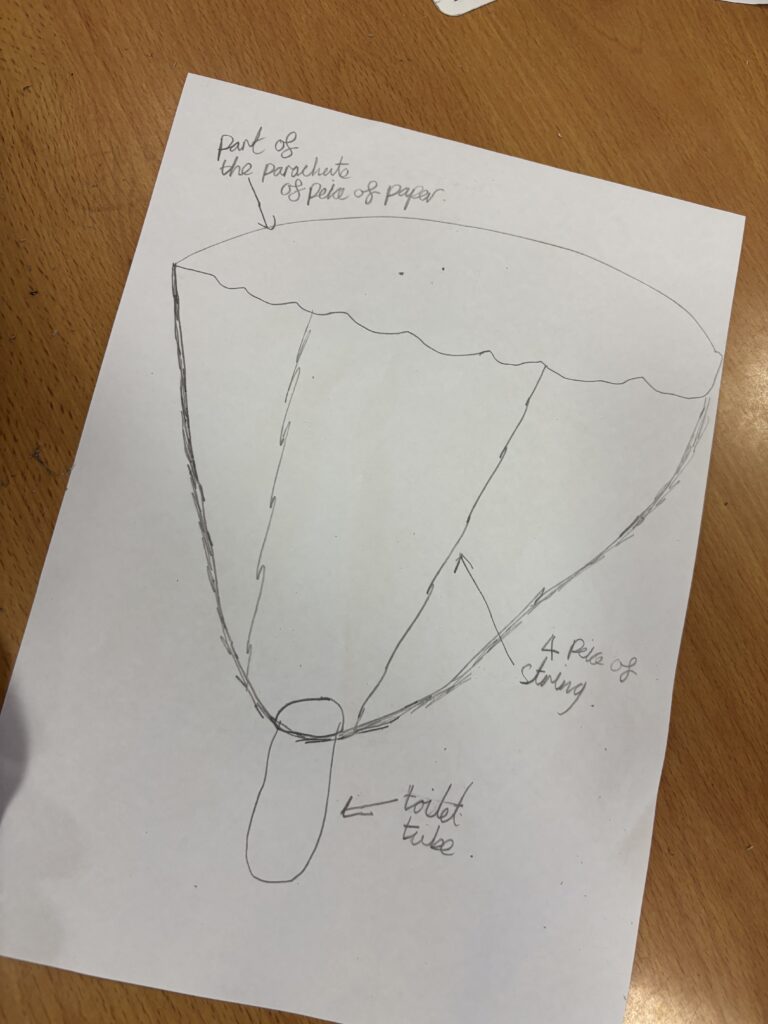
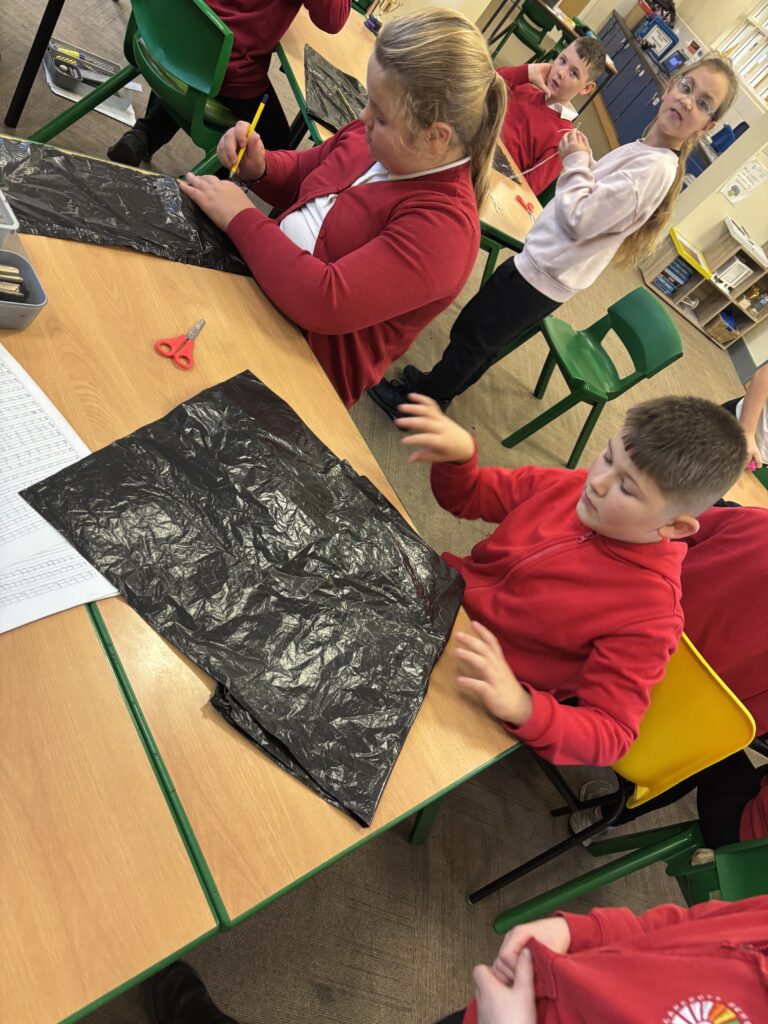

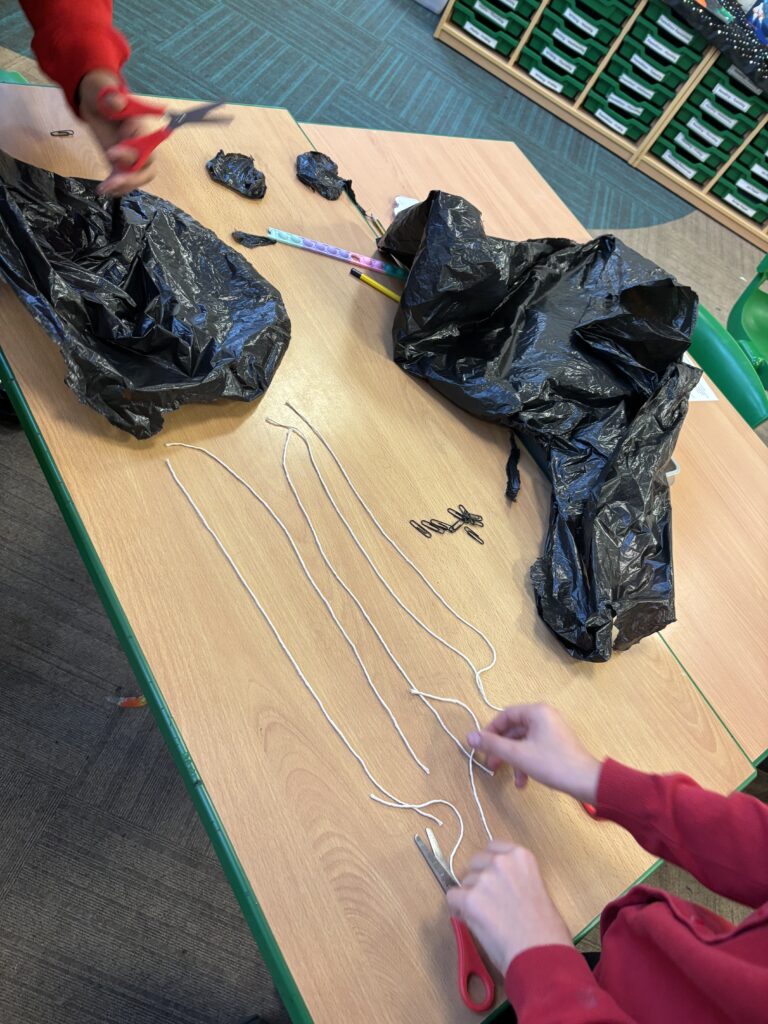
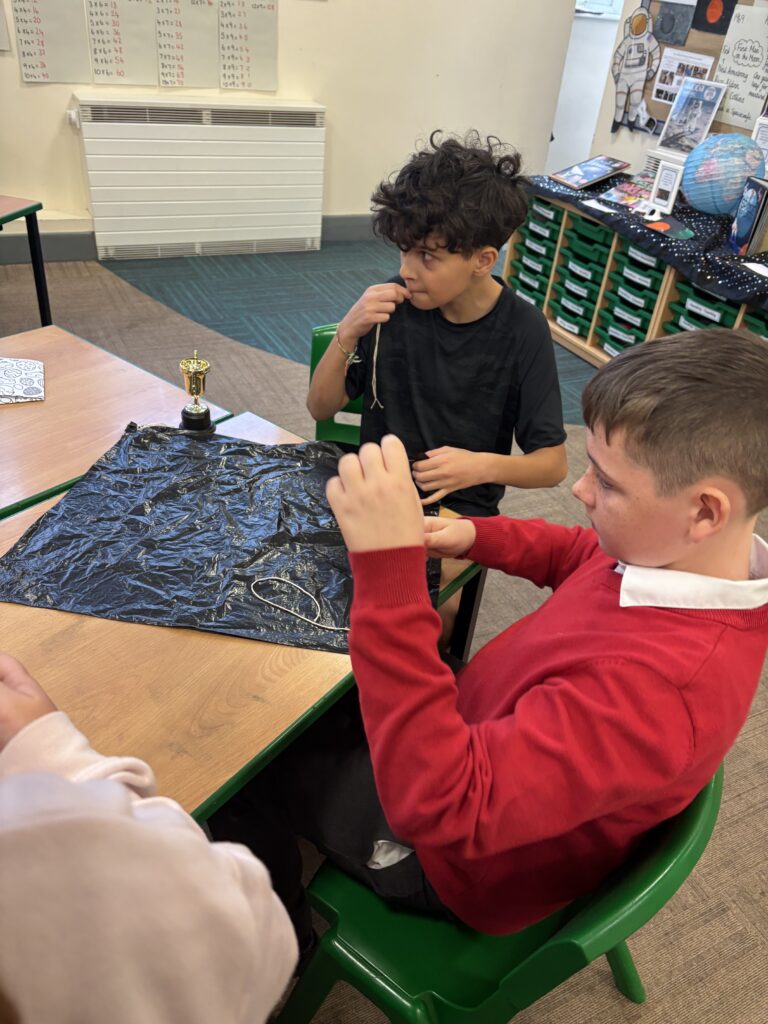
We loved conducting a fair test to investigate! Raza made an excellent scientist by being our constant variable and being the only one to drop each of the parachutes!
